OLYMPUS CIX100 Inspection System: Simplify Your Technical Cleanliness
The cleanliness of components, parts, and fluids is at the center of the manufacturing process. Meeting high standards for counting, analyzing, and classifying the often micron-sized contaminant and foreign particles is important for all processes: development, manufacturing, production, and quality control of the final product. International and national directives describe the methods and documentation requirements for determining particle contamination on essential machined parts since these particles directly impact the lifespan of parts and components. Current standards demand detailed information about the nature of the contamination, such as the number of particles, particle size distribution, and particle characteristic.
The OLYMPUS CIX100 cleanliness inspection system is designed to meet the cleanliness requirements of modern industry and national and international directives.

Standard process for cleanliness inspection: preparation (steps 1–3) and investigation (steps 4–6). Step 1: extract, step 2: filter, step 3: weigh, step 4: inspect, step 5: review, step 6: results.
Simple and Reliable
|

|
Seamlessly integrated hardware and software result in a durable, high-throughput system that delivers reliable and accurate data.
- Easy setup for an automated, turnkey solution
- Repeatable results from a stable measurement system setup
- Excellent optical performance and reproducible imaging conditions
- Automated system self-checks with an integrated calibration device
- Full system integration for automated control of all hardware components
- Supports various circular and rectangular sample holders
|
Intuitive Guidance for Maximum Productivity
|

|
- Dedicated, simple workflows minimize user action and provide reliable data―independent of the operator and experience level
- User-friendly tools make it easy to revise inspection data
- Step-by-step guidance boosts productivity and shortens inspection time
- User rights management restricts functions to minimize human errors
- Touch screen support with large buttons that are easy to click
- Compliant one-click reporting for efficient documentation
- All data are saved automatically and can be easily exported and shared
- Separate microscope mode with optional material analysis solutions
|
Fast Live Analysis
|
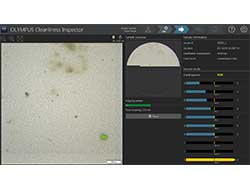
|
The innovative all-in-one-scan solution detects reflective (metallic) and non-reflective particles twice as fast as conventional methods that require two separate images. Immediate feedback of counted and sorted particles helps you make fast decisions.
- Overview image for fast identification of filter coverage, particle clustering, or worst particles
- Automatic live processing and classification of contaminant particles ranging from 2.5 μm up to 42 mm
- High throughput: system detects reflective and non-reflective particles in one scan
- Live analytics enable you to react to the results in real time
- Compliant results are customized to the selected industry standards
|
Efficient Data Evaluation
|

|
Revise inspection data with powerful and easy-to-use tools that support company and international standards for cleanliness inspection. Clear representation of all relevant inspection results saves time.
- Organized arrangement of images and data for efficient data review
- Various selectable views for immediate particle identification
- Particle locations and thumbnails are linked to the live images
- Easy reclassification, review, revision, and recalculation of inspection data
- Live display of the overall cleanliness code, particles, and classification tables
- Trend analysis to identify potential measurement deviations over time
- Display the complete inspection data in one view
|
Compliant Report Creation
|

|
One-click reporting meets the requirements and methodologies set forth in international standards. Report customization (e.g., including particle morphology), makes it easy to meet company standards.
- Generate professional reports with predefined, compliant templates
- Easily adapt templates and reports to meet industry and company regulations
- Supports various output formats, including MS Word and PDF
- Report file sizes are optimized for easy results sharing
- Long-term data storage so you can justify a decision years later
|
Reliable Turnkey System Solution:
Automated and Accurate For High Reproducibility
The OLYMPUS CIX100 system is a turnkey solution designed to meet the needs of automated cleanliness inspections. Each component is optimized for accuracy, reproducibility, repeatability, and seamless integration for reliable data in a high-throughput system. The system provides excellent optical performance for fast inspections of circular and rectangular sample areas. Automation of critical tasks helps speed up inspections while minimizing human errors and the risk of contaminating the sample.
|

|
1. Reproducible Imaging Conditions (Camera Cover)
Highest reproducibility by protected camera alignment to prevent unwanted misalignments.
2. Innovative Polarization Method (Detection Unit)
Detects both reflective (metallic) and non-reflective particles in a single scan.
3. Proven Durability (Stage / Stage inserts)Reproducible Measurement Conditions
The automatic focus drive helps ensure reproducible positioning for straightforward reinvestigation of detected contaminants. The stage insert maintains a secured membrane position and features an additional insert for the integrated calibration tool or a second sample.
4. Excellent Optical Quality (Microscope)
Renowned Olympus UIS2 objectives and high-resolution camera provide exceptional image quality and accurate measurements.
5. Easy to Use (Software)
Easy-to-use software guides users through the entire inspection process, helping to boost productivity and minimize errors. The interface has large buttons that are easy to click with a mouse or the touch screen monitor.
6. High Performance (Workstation)
While scanning the sample, the system gives direct visual feedback of classified and counted contaminants with color changes. Optionally, the system can emit an acoustic warning signal when limits are exceeded. |
Sample Holders for Greater System Versatility
The CIX100 system supports various sample holders with either circular or rectangular inspection areas. This includes holders with white or black backgrounds for filter membranes with a diameter of 25 mm, 47 mm, and 55 mm; holders for tape lift sampling; holders with a flat surface for metallurgy applications; and holders for particle traps.

Circular sample holders with white and black backgrounds for filter membranes with diameters of 25 mm (left), 47 mm (middle), and 55 mm (right).
|

Sample holder for particle traps
|
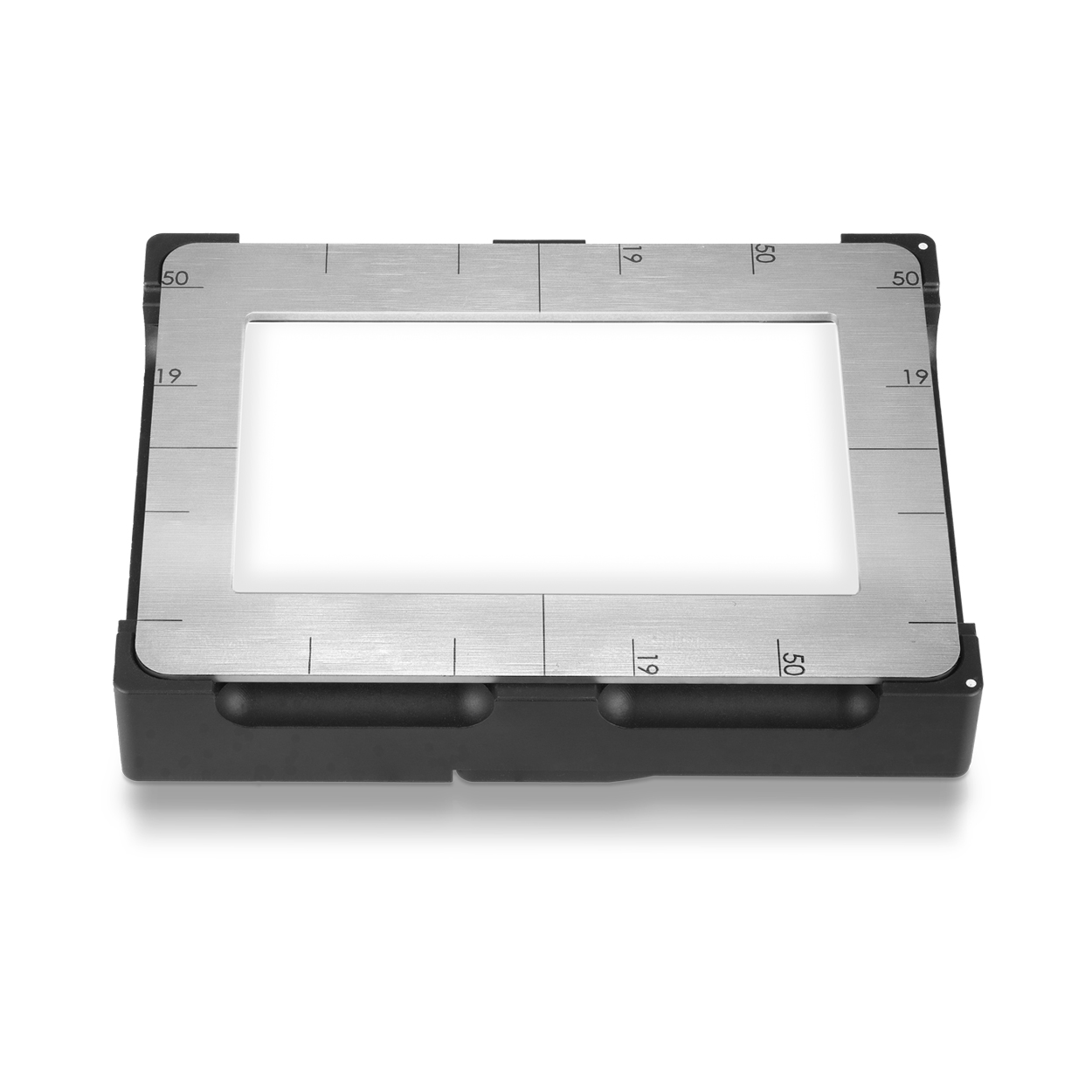
Sample holder for tape lift sampling
|
Directly Review Multiple Samples After a Batch Scan
The CIX100 system offers a batch mode for inspection of multiple samples at once. The scans can have similar inspection configurations or individual settings on each sample. After the inspections, it is possible to review the result of each sample separately and generate a report.
Reproducibility and Repeatability
|

|
The cleanliness inspection workflow is easy, so even inexperienced operators can achieve accurate and repeatable results. The preconfigured and precalibrated system, user rights management, and regular system self-checks help ensure that the settings are correct for reproducible inspection data independent of the operator or system. As a result, multiple departments and sites can apply the same quality standards at different locations.
The diagram illustrates the CIX100 precision by verifying the measurement stability and repeatability using the process performance index (Ppk). The same sample at 5X and 10X magnification was measured 10 times, and the particle count from typical size classes was extracted. The diagram shows the evaluation of Cpk and Ppk on class E (50–100 μm).
|
Excellent Optical Quality
|

|
Olympus UIS2 objectives provide high optical performance for excellent measurement and analysis accuracy. A dedicated light source maintains a consistent color temperature optimized for cleanliness inspection. |
Optimized Reproducibility
|

|
The preconfigured and pre-calibrated system has reminders for automatic system self-checks with the integrated calibration slide that helps maintain regular system verification. |
Stable Measurement System
|

|
The optical path alignment, motorized nosepiece, and the camera are protected by a cover to prevent accidental modifications. For greater stability, all moving parts have been eliminated from the optical light path. |
Intuitive Guidance for Maximum Productivity
|

|
The OLYMPUS CIX100 system delivers enhanced performance and productivity through the entire inspection process and makes technical cleanliness inspections easy for operators of every experience level. The software provides step-by step guidance for the entire cleanliness inspection. Intuitive workflows and user rights management improve productivity and confidence in results while reducing cycle time, cost-per-test, and user errors. The result is a system optimized for high quality standards.
The clear structured user interface not only makes cleanliness inspection repeatable and reproducible but also easy for experts and non-experts alike.
|
Step-by-Step Workflow
|

|
The intuitive workflow guides users through the inspection process in three easy steps: Inspect Sample, Review Results, and Create Report. From scanning the sample to creating compliant reports, maximized automation improves ease of use during each step so that users of all experience levels can perform efficient inspections and produce reliable data.
Step by step, the intuitive interface guides operators through the complete inspection process. The result is a fast, productive workflow.
|
Preconfigured and Precalibrated System
|

|
A preconfigured, pre-calibrated system combined with an intuitive user interface helps make cleanliness inspection easy for operators of every experience level.
The system reminds to perform automatic system checks for precise results on a regular basis; and pre-configured and customized system configurations supports the operator on daily purposes.
|
Advanced Microscopy
Microscope mode enables you to leave the dedicated cleanliness inspection workflow to perform microscopic imaging. Expand the microscope mode capabilities with optional material analysis solutions, such as Grain Intercept, Grain Planimetric, Cast Iron, Inclusion Worst Field, Layer Thickness, Dendrite Arm Spacing, Phase Analysis, Porosity, and Coating Thickness.

Storage and Sharing

|
All data are saved automatically. Users can quickly access all the archived samples, as well as their associated data and reports for revision or distribution. |
Management Tools
Administrators can control which users have access to different parts of the system. This helps inexperienced users stay on task. Importantly, they also cannot influence critical parameters like calibration and data selected for the automatically generated report.

Administrators can access the complete system setup (top), while inexperienced users can be limited to basic workflows (bottom)
Touch Screen Support
|

High performance by touch technology
|
The interface has large buttons that are easy to click with a mouse or the touch screen monitor. |
Inspection Configurations
|

|
Inspection configurations are used to specify all the parameters for sample inspection, including rules for the characterization of particles, setting particle families, and types.
The CIX100 system is already configured and calibrated when it is delivered but can be easily modified and customized to your applications and requirements.
|
Fast Live Analytics and Review
All Relevant Data Displayed in One Place
|

|
The OLYMPUS CIX100 system offers high-performance image acquisition and precise live analytics of both reflective and non-reflective particles ranging from 2.5 μm up to 42 mm in a single scan thanks to a patented* polarization method. This all-in-one-scan solution enables scans to be completed twice as fast as the classical method (Inspector series). Counted and sorted particles are displayed live and sorted into size classes while the scan is acquired, supporting direct decision making and helping ensure a fast reaction time in case of a failed test.
All relevant data are displayed live on a single screen during the inspection, enabling the operator to stop or interrupt the inspection if a test fails.
|
Capture Data in a Single Scan
An innovative polarization method based on wavelength separation and color detects both reflective (metallic) and non-reflective particles in a single scan. Integrated into the microscope frame, this high-throughput design enables scans to be completed twice as fast as the classical method (Inspector series) and eliminates moving components from the optical light path, such as the polarizer, which could negatively impact the system stability, leading to potentially incorrect results. This all-in-one-scan technique increases the number of inspected particles, reducing the cost per test and shortening the reaction time in case of a failed test.

1: Classical method, 2: Single-scan method
(1-1: First image of non-reflecting particles, 1-2: Second image of reflecting particles, 2: Single-scan solution: Combined)
An innovative polarization method detects both reflective (metallic) and non-reflective particles in a single scan.
Review Particles in Real Color
Activating real color mode enables users to view particles in their actual colors, providing additional information to identify the particle type as metallic or non-metallic.
The all-in-one scan shows all reflective particles as blue in polarization, indicating these particles are metallic. In real color mode, the blue color of reflective particles is omitted, and the true colors of all particles are shown in the brightfield image. Materials that are actually blue remain blue, while metals show their metallic shine and the reflections typical for the material.
With these helpful visuals, users can better understand the nature of each particle and quickly confirm the particle type.
 |
Particle as seen by the system during detection and analysis. The blue color indicates that this particle is metallic. |
 |
The same particle as seen during the review mode in real color using the U-ANT filter and the color correction mode. The particle is confirmed as metallic. |
Fast Identification
|
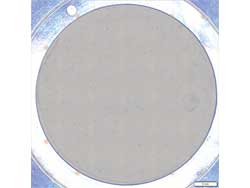
|
The sample overview image is created at the beginning of the sample inspection and displays the entire filter at low magnification. The overview image helps to identify filter coverage or particle clusters before the sample inspection starts.
The overview image assists with evaluating filter coverage, particle clustering, or worst particles, so users can react quickly before the final inspection starts.
|
Sample Information Overview
|

|
Inspection configurations are used to specify all parameters for sample inspection.
The sample information area lists the most important data.
|
Live Analytics for Real-Time Results
|

|
Contaminants are automatically analyzed and sorted into size class bins defined by the selected standard and are color coded to clearly indicate which size class exceeds a predefined limit. A statistical control chart function visually illustrates the level of particle class compliance, for improved reliability.
Predefined acceptable particle counts per size classes are displayed, and the sample can be validated (OK) or rejected (NOK) even before the complete membrane is acquired. An acoustic signal can be switched on when the approval reads NOK or the inspection is finished.
|
Detect Dark, Bright, Small and Large Particles
|

|
Live processing and classification of both small and large particles according to international standards (2.5 µm up to 42 mm).
Image stitching automatically reconstructs images of large particles.
Scan dark particles on a bright background or vice versa.
|
Time Information
|

|
Clearly view the time remaining for sample acquisition. |
Flexible for Evaluation and Revision
|

All particles and classification tables,
overall cleanliness code, particle location,
and the standard used appear in one view.
|
The OLYMPUS CIX100 system combines powerful, easy-to-use tools to revise inspection data with a fast, guided particle review. The one-click reclassification function provides flexibility and supports international standards. Thumbnail images of every contaminant detected by the system are linked with dimensional measurements, making it easy to review the data. Retrieving a contaminant’s information is simple. During the review process, the results are updated and displayed automatically in all views and size classification bins. This saves you time with clear representations of all relevant inspection results. |
Deep Data Insights for Direct Identification
|

Visualization of different particle
view eg. largest reflective or
non-reflective particles
|
Clear arrangement of images, data and results for immediate decision making for reprocessing. At-a-glance display of complete inspection data in various selectable views. View images of particles organized from largest to smallest for all kind of particles (reflective or non-reflective). |
Revise Inspection Data
|

|
Based on the stored particle position information, the stage directly repositions at a selected particle position for further investigation and revision, such as with an Extended Focus Image (all-in-focus image, EFI) or a tailored solution for a height measurement. |
Trend Analysis
|

|
Data statistical analysis can be performed over time and graphically displayed. |
Particle Snapshots Documentation
|

|
Individual images of contaminant can be taken and processed for manual measurement confirmation and improved documentation. |
Easy Data Review
|

View images of particles organized
from largest to smallest for all
kinds of particles (reflective or non-reflective).
|
Thumbnail images of contaminants are conveniently linked with their locations and dimensions. Selecting a thumbnail automatically drives the system to this contaminant.
|
Trusted Results
|

Classification and particle tables
list the results according to
the selected standard.
|
Classification and particle tables show the results according to the selected standard and particle data respectively. |
Support Standards
Evaluation is performed according to all major international standards used in the automotive and aerospace industries including:
ASTM E1216-11:2016
ISO 4406:2021
ISO 4407:1999
ISO 4407:2002 [Cumulative and Differential]
ISO 11218:1993
ISO 12345:2013
ISO 14952:2003
ISO 16232-10:2007 (A, N, and V)
ISO 16232:2018 (A, N, and V)
ISO 21018:2008
DIN 51455:2015 [70%and 85%]
NAS 1638:1964; NF E 48-651:1986
NF E 48-655:1989
SAE AS4059:2011
VDA 19.1:2015 (A, N, and V)
VDA 19.2:2015
Direct Feedback
|

The overall classification results
based on the selected standard
are calculated and displayed.
|
Instantaneous calculation and presentation of overall classification contamination class code (CCC) according to the selected standard. |
Precisely Compliant
|

Different Cleanliness Codes
|
Results can be recalculated to all standards with one click. |
Quick and Easy: Review, Revise, and Recalculate
Operators can easily revise their inspection data. Powerful software tools, such as delete, split, and merge, make revising the data simple.
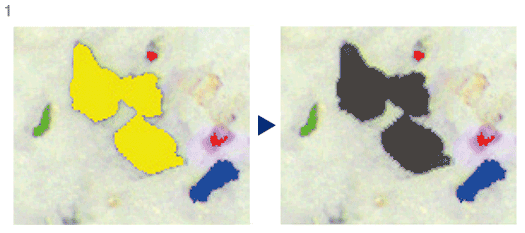
Height Measurement Solution

The CIX100 system’s extended focus imaging (EFI) function captures images of samples whose height extends beyond the objective’s depth of focus and stacks them together to create an all-in-focus image. The system can be further enhanced with a height measurement solution consisting of a 20X objective and special software to fulfill the VDA 19 requirements for height measurements. For selected particles, the height measurement is performed either automatically or manually. The calculated height value is listed as an additional data field in the results sheet.
Define company standards
Evaluation is performed according to all major international standards used in the automotive and aerospace industries. Companies also have the flexibility to set up their own evaluation standards.
Efficient Report Creation
|

Reports that comply with international
standards.
|
Smart, sophisticated reporting tools enable easy one-click digital documentation of inspection results. Reports are based on predefined templates that comply with industry standards and can be easily modified to meet the needs of your company. Export the results to Microsoft Word or directly export as a PDF for easy data sharing over email. Report templates and data sharing tools help inexperienced operators quickly create and distribute accurate, professional documentation. The OLYMPUS CIX100 system can also archive reports and data for record keeping and trend analysis. |
Completely Intuitive by Predefined Templates
|

|
Reports are based on predefined templates that comply with industry standards and can be easily modified to meet the needs of your company. |
Efficient and Easy
|

Analytical reports comply with the
standard used during analysis.
|
A list of available templates is displayed based on the standard used during analysis and allows fast creating of compliant reports even by unexperienced operators. |
Easy Data Export
|
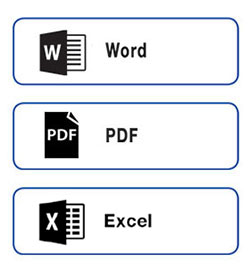
The software supports output
formats such as MS Word
or PDF or Excel.。
|
Exporting a report is as easy as clicking your mouse. Create the reports in Microsoft Word or PDF format, depending on your preference, and easily export the particle and classification results and trend analysis to Microsoft Excel. Report file sizes are optimized for efficient data sharing. |
Long-Term Data Storage
|

|
Quickly access all the archived samples, as well as their associated data and reports for revision or distribution. All inspection data and reports are automatically saved and archived for a certain period of time.
Capability to justify decision after years.
|
Sample Information Area
|

The information page of a report
|
This area of the report consists of information about the sample such as customer, examiner, order number, and date of inspection. All data are inserted automatically. |
Classification Table
|

Because the largest particles
detected during the scan
are of high interest, this
report section lists the ten
largest particles found
during the inspection.
|
This section of the report incorporates the data calculated during the inspection according to the standard used and displays information such as size class and range information, as well as the absolute numbers of particles detected and the contamination class. |
Images of Largest Particles
|

The result page showing images of the largest particle
|
Thumbnails of the largest particles are displayed together with the particle parameters and the particle class. Thumbnails also show images of contaminants reconstructed by stitching smaller images together. |
 CIX100_Brochure_CN
CIX100_Brochure_CN
 CIX100_Brochure_EN
CIX100_Brochure_EN



 Microsystem
Microsystem Endoscopysystem
Endoscopysystem Energysystem
Energysystem EndoscopyConsumables
EndoscopyConsumables +86-21-54286005
+86-21-54286005 
 Room 602, Building 1, No. 111 Luxiang Road (Greenland Park Plaza), Baoshan District, Shanghai, China
Room 602, Building 1, No. 111 Luxiang Road (Greenland Park Plaza), Baoshan District, Shanghai, China  English
English
 中文
中文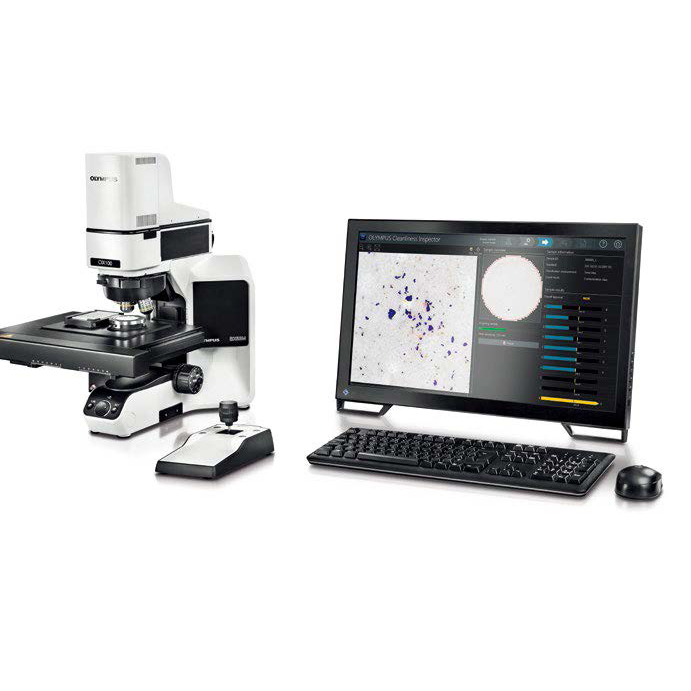


















































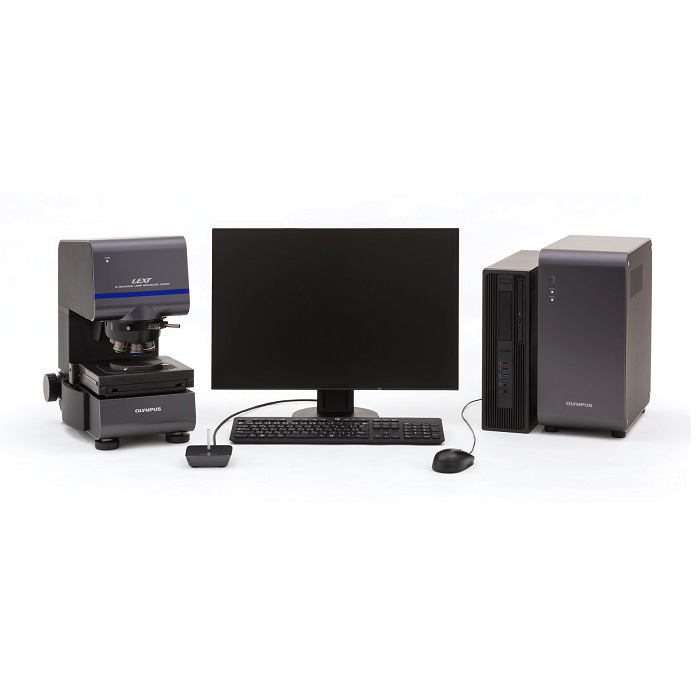
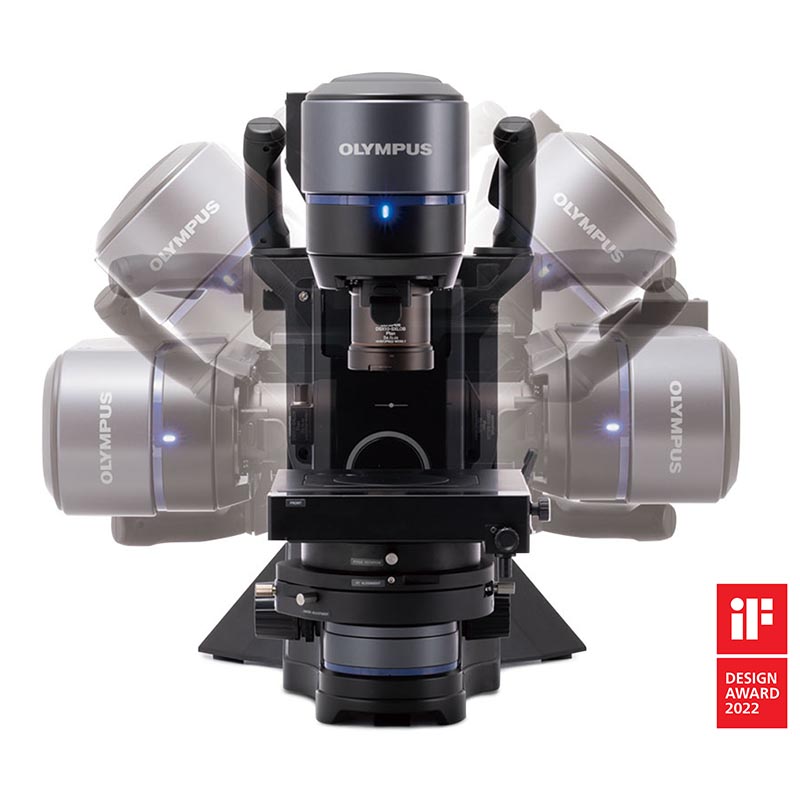
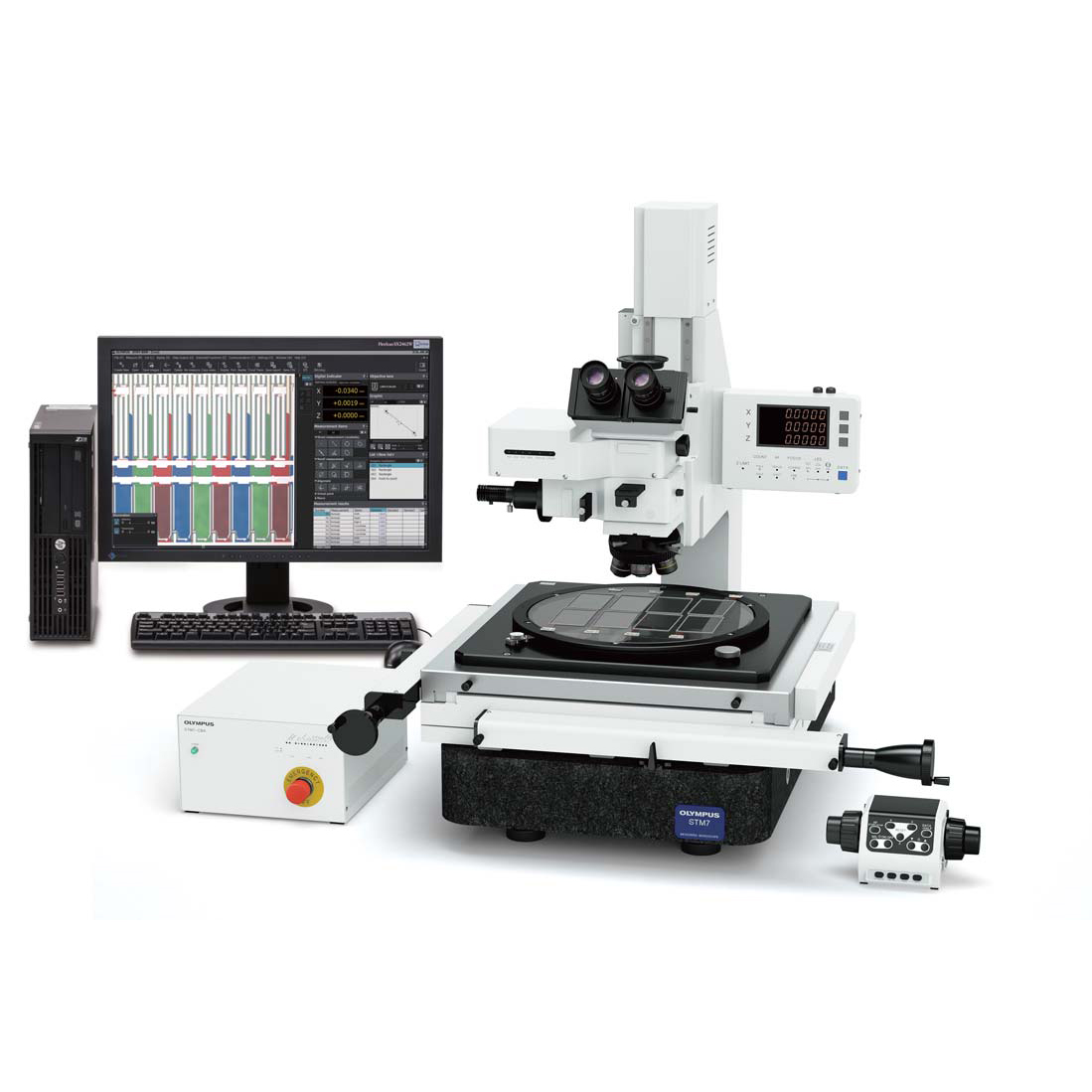
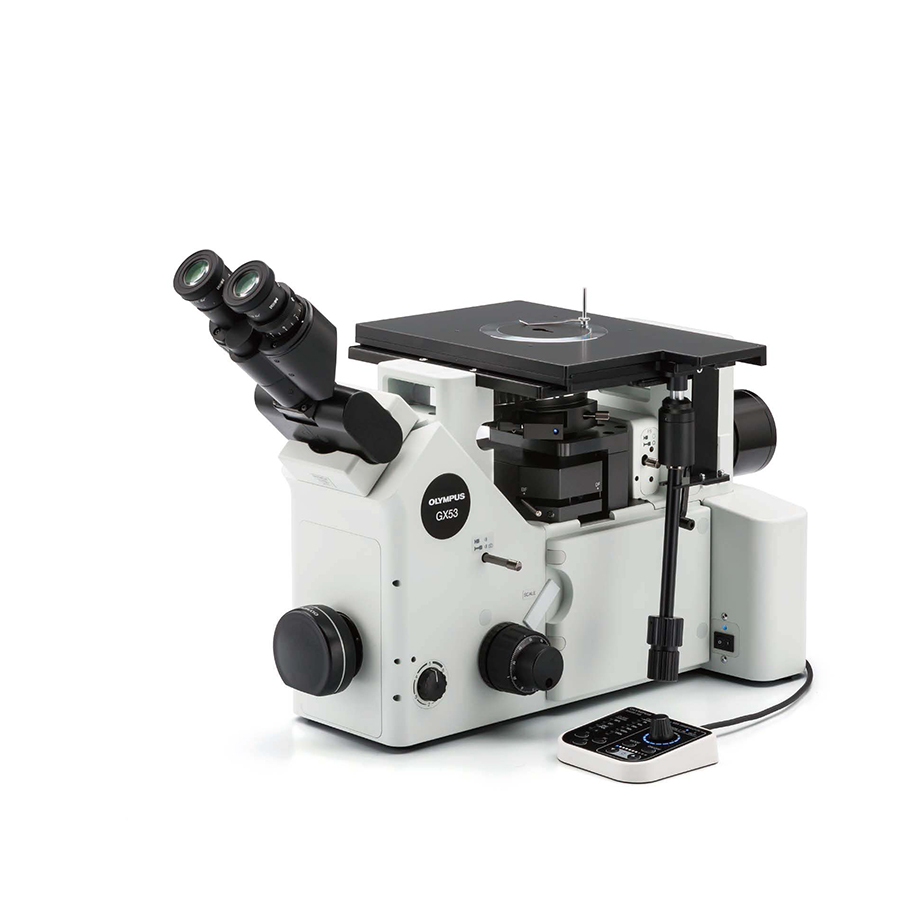
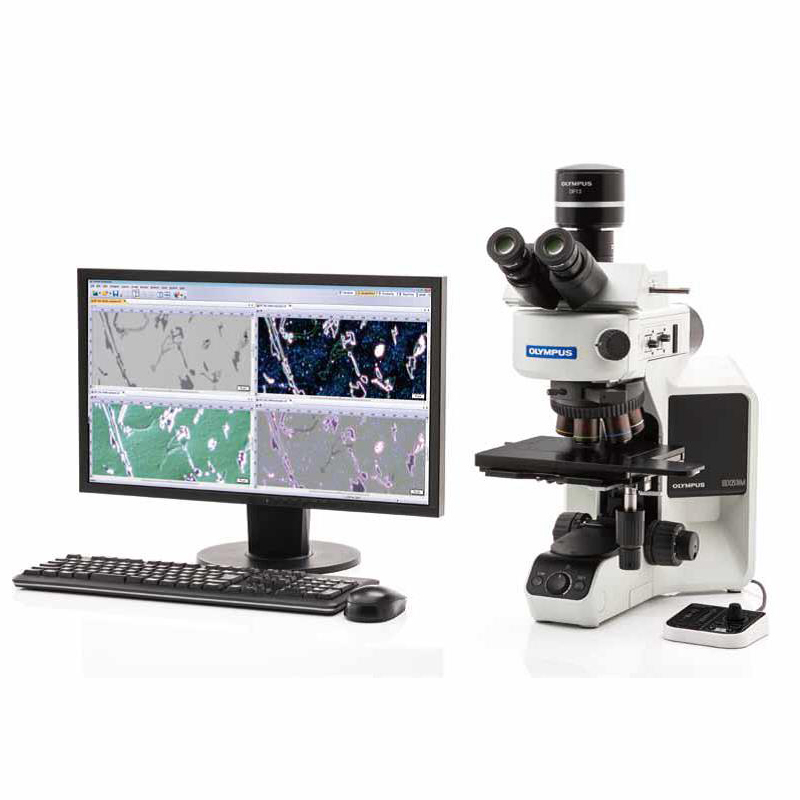
 中文
中文 English
English